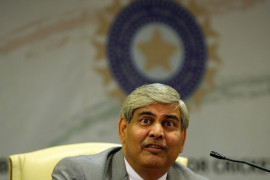
Relationships are strange, complicated things. They can make us love deeply; yet, find ourselves hating the same person with equal vigour. Relationships between nations largely stem from their shared histories, but the sustenance and nurturing of these relationships is influenced by political tendencies propagated by the media.
When it comes to complicated relationships, what better example is there than our association with our neighbour, India? The sentiments of masses for India, be it with respect to wars, cricket, political crises etcetera, have always been passionate, albeit varied. Nevertheless, with an on-going exchange of entertainment personalities and the recent handing over of Geeta to her homeland by Edhi Foundation, it is clear that many aim to extend the message of brotherhood and promote a healthy exchange of ideas between both nations.
And what better way to facilitate this healthy exchange than through art? Sanat Gallery, an avid promoter of art across borders, recently invited New Delhi-based artist Manisha Gera Baswani to show her body of work at their space in Karachi. Titled ‘Hope is the thing with feathers’, after a poem by Emily Dickinson, the first thing that came to mind was that this show, among other efforts, could be a small step toward the message of peace between the two nations.
 ‘Day...everyday’, 2011. PHOTO COURTESY: SANAT GALLERY
‘Day...everyday’, 2011. PHOTO COURTESY: SANAT GALLERYBaswani’s earlier works drew from Indian miniatures and Buddhist murals. Her guru Ramachandran’s vast knowledge of the visual culture of India became a distinctive learning tool for her. Later, one could see Western influences, such as Hollywood icons including James Bond and Elvis Presley, on her canvases along with insects, galaxies, ancient Indian murals and monuments. Her many travels, including a trip to the ruins of Mandu and Jaisalmer between 2007 and 2009, have further influenced her work.As a student at Jamia Millia Islamia University Baswani studied under some big names of contemporary Indian art, including the renowned artist A Ramachandran, whom she considers her mentor and guru. Under him, she received her National Scholarship and Junior fellowship from the Government of India from 1991 to 1993 and from 1995 to 1997, respectively. She also received a scholarship from the French Government to study art in Paris in 1992.
When one sees Baswani’s work on display at the Gallery, one can immediately grasp her connection with nature. Earthy tones of yellow ochre, army green and rust brown are often seen inundating her canvases, with imagery such as vegetal figures, an abundance of feathers and flora and fauna and formations. Often, one can see compositions that vaguely resemble Mughal miniature paintings with occasional geometric forms and divisions. Also, her use of gouache (opaque watercolour on paper) takes one back to a time when this medium was used by artists to create miniature paintings that were patronised by Mughal emperors. This reminds one of the shared histories of Pakistan and India, particularly in the 16th and 17th Centuries, when the two nations were part of the Indian subcontinent under Mughal rule. Today, a large number of Pakistani artists also study Mughal miniature painting and derive strong influences from it in their works.
Baswani’s ‘Scratch Beneath’, in pencil, charcoal and watercolour on paper, reveals a deep red wound of sorts against a white background. It is unclear whether it is a flesh wound or a cut in fabric. Inside the scarlet, exposed surface lies another cut revealing a riveting blue. What could this symbolise one may ask; perhaps peace after war, relief after hardship, bounty after toil or simply the multiplicity of layers in any given situation.
 ‘Scratch beneath’, 2012. PHOTO COURTESY: SANAT GALLERY
‘Scratch beneath’, 2012. PHOTO COURTESY: SANAT GALLERYNature is the primal force in most of Baswani’s other pieces as well. It helps depict a plethora of complicated ideas, which, for the most part, the artist leaves open to interpretation. Her works reflect distinct phases of her life, each a compact episode of an enduring voyage that people across borders can delight in, and relate to.In ‘Let a thousand flowers bloom’, Baswani depicts an undulating landscape of what seems like richly coloured mountains, sharp peaks and curvilinear forms of the earth. Imposed on these are rows of flowers in different stages and at the very top lies a sperm-like flower, seemingly in wait to merge with one of the many flowers in close proximity. Perhaps Baswni’s piece is a literal interpretation of the initial process of (re)creation as a closer look reveals various faces painted on selective roses, embodying the possibilities of new life.
Shanzay Subzwari is an artist and art writer based in Karachi.
She tweets @ShanzaySubzwari
Published in The Express Tribune, Sunday Magazine, November 29th, 2015.


































































COMMENTS
Comments are moderated and generally will be posted if they are on-topic and not abusive.
For more information, please see our Comments FAQ